Establishing a peaceful and noise-free environment within the confines of your home can make a significant difference. Whether you're looking to block out street sounds, keep noisy neighbors at bay, or simply enjoy some peace and quiet, soundproofing a room is the key.
In this guide, we will explore the process of how to make a room soundproof, uncovering the techniques, materials, and strategies to convert any space into a serene place. From hushing the cacophony of urban life to achieving acoustic perfection for your home theater, this guide will empower you with the knowledge and skills needed to master the art of soundproofing.
What To Consider Before Soundproofing a Room
Identify Noise Sources
Dedicate time to pinpointing the particular sources of noise within the room. Is it traffic noise from outside, loud neighbors, or sounds from appliances within the room? Understanding the origins of the noise will guide you in selecting the most effective soundproofing methods to control the sound coming into or leaving the room.
Budget
Decide on the budget you are willing to allocate for soundproofing. Different soundproofing solutions vary in cost, so having a budget in mind will help you prioritize which methods to use. Remember that some soundproofing projects can be done on a tight budget with DIY solutions.
Room Purpose
Consider the function of the room you're soundproofing. High-traffic areas like living rooms or bedrooms may require more extensive soundproofing than less-frequented spaces. A home office, for example, might need to block out noise for concentration.
Building Codes and Regulations
Examine the local building codes and regulations about soundproofing in your area. Some areas have specific requirements for noise control, especially in multi-unit buildings. Verify that your soundproofing project adheres to these regulations to mitigate the risk of potential legal issues.
DIY vs. Professional Installation
Decide whether you have the skills and expertise to tackle the soundproofing project yourself (DIY) or if it's best left to professionals. While some solutions, like adding weatherstripping or using curtains, are DIY-friendly, complex projects like installing acoustic insulation or soundproof drywall may require professional installation for optimal results.
How to soundproof a room
Seal Gaps and Cracks
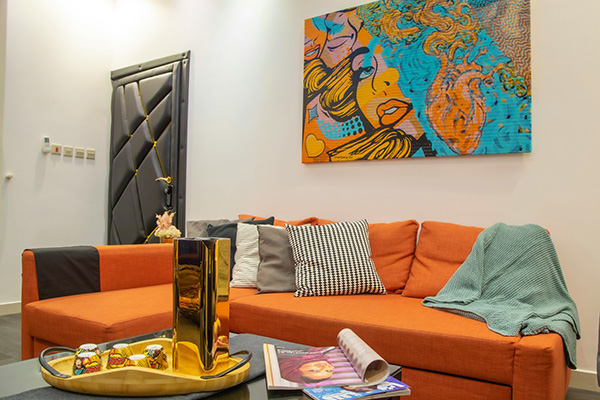
Sealing gaps and cracks is a crucial step in soundproofing a room. Even minor openings can permit noise to infiltrate, reducing the efficacy of other soundproofing measures. To close these gaps, examine the room for visible cracks around windows, doors, baseboards, and electrical outlets. Utilize a premium acoustic sealant or caulk to fill these openings, guaranteeing a secure seal. Consider using backer rods or foam strips before applying sealant for larger gaps or structural issues. Moreover, applying weatherstripping around doors and windows can prevent sound from seeping in or out.
Use Heavy Curtains
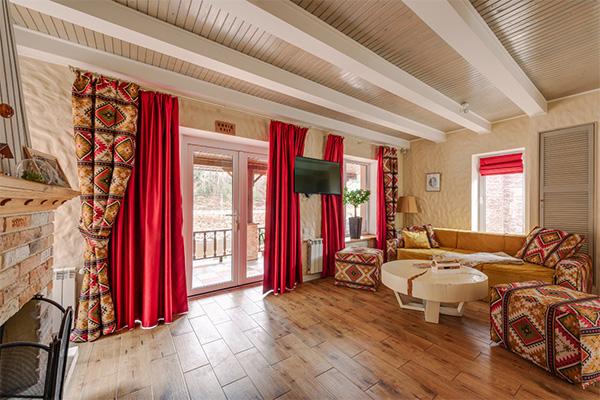
Using heavy curtains is an effective and budget-friendly way to soundproof a room. These curtains, often made from dense materials like velvet or thermal-lined fabric, provide an additional barrier against noise. They absorb acoustic waves, diminishing their transmission, thereby enabling a quieter and more serene environment.
To optimize their soundproofing capabilities, ensure the curtains are sufficiently long to reach the floor and wide enough to cover the entire window or wall. You can also opt for blackout curtains, which block out light and provide excellent sound absorption properties. Installing heavy curtains is a simple yet effective solution for improving the acoustic comfort of your space, especially in bedrooms, home theaters, or noisy urban environments.
Add Weatherstripping to Doors
Adding weatherstripping to doors is a practical and cost-effective method to soundproof a room. Gaps around doors can be significant sound pathways, allowing noise to enter or escape easily.
Weatherstripping consists of adhesive-backed strips that create a tight seal when the door is closed, effectively blocking sound transmission. It not only diminishes sound but also enhances energy efficiency by preventing drafts. To apply weatherstripping, measure the gaps around the door frame and cut the strips to fit. Typical weatherstripping options encompass adhesive-backed foam tape, V-strip, and door sweeps.
Install Acoustic Panels
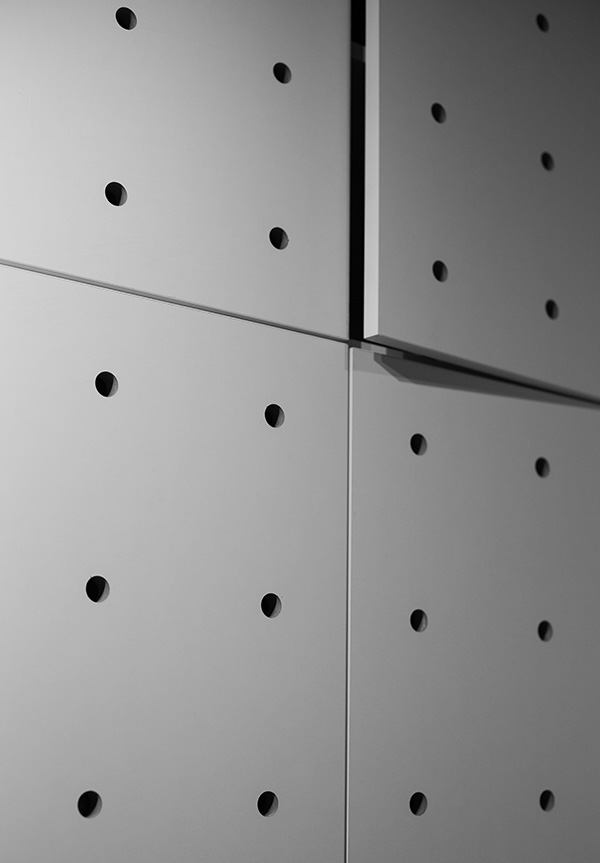
Installing acoustic panels on an existing wall or walls is a highly effective method for soundproofing a room, particularly when dealing with interior noise reflections. These panels are crafted to absorb sound waves, diminish echoes, and reduce sound transmission. Available in various sizes, shapes, and designs, these panels facilitate easy integration into your room's decor.
Acoustic panels are commonly constructed from dense materials such as fiberglass or foam and can be mounted on walls or ceilings. They create a sound absorption barrier that enhances the room's acoustic comfort when strategically placed. Whether you're setting up a home studio or home theater or simply aiming for a quieter living space, acoustic panels offer a versatile solution to combat noise pollution and create a more serene environment.
Use Rugs and Carpets
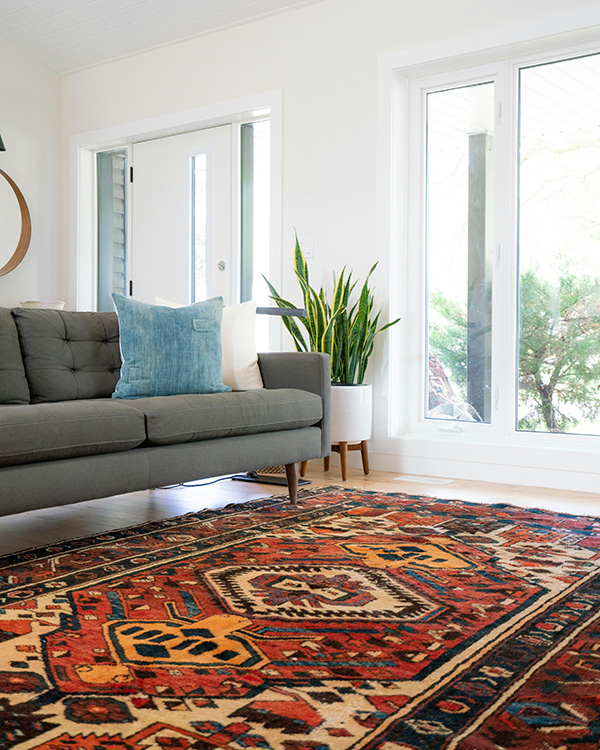
Rugs and carpets are versatile tools in the quest to soundproof a room. They function as effective sound absorbers, diminishing noise reflections, and impact sounds. Placing rugs or carpets on hard flooring surfaces can significantly dampen sound transmission and create a quieter atmosphere.
Opt for thicker, heavier rugs for better soundproofing results, and consider using rugs with padding for extra noise reduction. In addition to their acoustic benefits, rugs, and carpets also enhance the room's aesthetics and provide a comfortable underfoot experience. Whether in a living room, bedroom, or home office, incorporating rugs and carpets into your decor can be a stylish way to achieve acoustic comfort while minimizing noise disruptions.
Furniture Placement
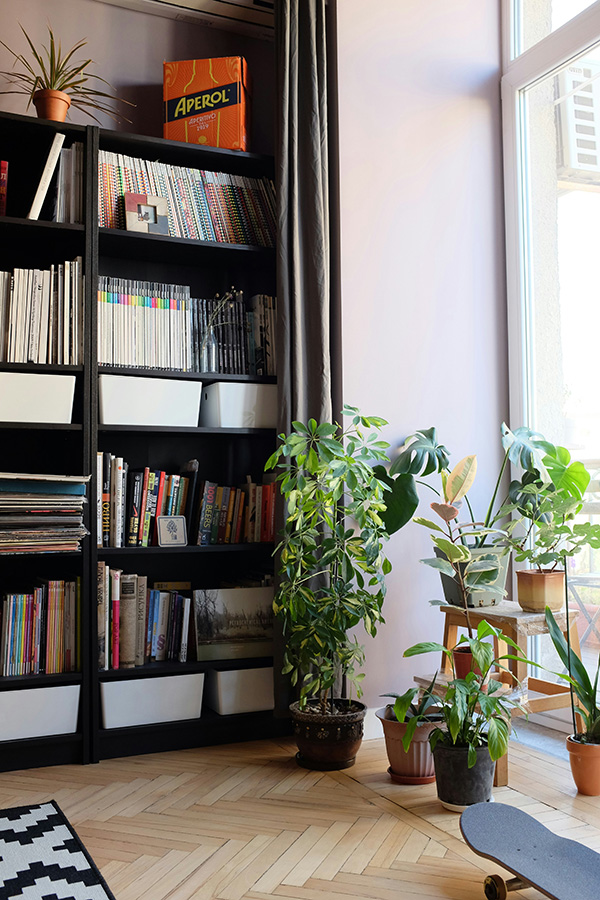
Strategically arranging furniture is a simple yet effective strategy for soundproofing a room. By placing large, heavy pieces of furniture against shared walls, you can help reduce noise transmission. Sofas, bookshelves, wardrobes, and other substantial items act as sound barriers, absorbing and blocking sound waves. Additionally, arranging furniture away from potential noise sources, such as windows or doors, can further minimize sound intrusion. This approach not only improves soundproofing but also enhances the functionality and aesthetics of the room.
Soundproofing Drywall
Soundproofing drywall, also known as acoustic or soundproof drywall, is a specialized building material designed to reduce noise transmission between rooms significantly. It incorporates additional layers and sound-dampening materials designed to absorb and block sound waves, making it an excellent choice for soundproofing walls and ceilings.
Installing soundproof drywall over existing walls can significantly enhance the acoustic comfort of a room, rendering it well-suited for applications such as home theaters, bedrooms, or any space where effective noise control is essential. It's important to note that this type of drywall is thicker and heavier than regular drywall so that it may require professional installation. Nevertheless, this investment can result in a quieter and more peaceful living environment, free from unwanted noise disturbances.
Seal Air Vents
Sealing air vents is a practical approach to soundproofing a room, especially if the outside noise enters through the HVAC system. While air vents are essential for ventilation, they can also be conduits for noise transmission. To soundproof effectively, start by inspecting the vents for any gaps or leaks. Use acoustic sealant or weatherstripping to seal these openings.
Alternatively, you can install magnetic vent covers with foam backing to create a temporary soundproof barrier. Sealing air vents helps reduce the infiltration of external noise, ensuring your room remains peaceful and quiet. However, be mindful of ventilation needs and consider using these solutions selectively in rooms where noise control is a priority.
Use Soundproofing Caulk
Soundproofing caulk is a valuable tool for effectively reducing noise in a room. This specialized acoustic sealant is designed to fill gaps, cracks, and joints in walls, ceilings, and floors, creating an airtight and sound-resistant barrier. It efficiently obstructs the passage of sound waves, thereby reducing noise transmission between rooms.
Soundproofing caulk is especially useful for sealing small openings around electrical outlets, baseboards, and gaps in drywall. Its pliability and adhesive characteristics simplify handling, ensuring a secure and snug seal. Whether you're dealing with airborne or impact noise, using soundproofing caulk in conjunction with other soundproofing methods can significantly improve the acoustic comfort of your space, creating a quieter and more peaceful environment.
Install Soundproof Doors
Installing soundproof doors is a highly effective method for creating a quieter and more peaceful room. These doors are specifically designed to minimize noise transmission, making them ideal for spaces where sound control is a priority.
Soundproof doors are constructed with dense materials, often including multiple layers of wood or other sound-dampening materials. Additionally, they incorporate specialized seals and gaskets that establish an airtight seal when the door is closed, effectively blocking external noise. Whether you're setting up a home recording studio or home theater or simply want to reduce noise from adjoining rooms, soundproof doors provide a substantial barrier against unwanted sound intrusion. Investing in these doors can transform your space into a haven of tranquility, free from disruptive noise.
Soundproof the Ceiling
Soundproofing the ceiling is an effective way to create a more serene and noise-free environment. Unwanted noise from above, such as footsteps or conversations, can be a major disturbance in multi-story buildings.
To address this, you can install soundproofing materials on the ceiling to absorb and block sound vibrations. Common solutions include acoustic panels, acoustic tiles, or mass-loaded vinyl (MLV) under the ceiling drywall. These materials reduce the transmission of airborne and impact noise, making your room significantly quieter. Whether you're soundproofing a bedroom, home office, or living space, enhancing the ceiling's acoustic properties can greatly improve your overall comfort and well-being by minimizing disruptions from the floor above.
Use wall tapestries or thick blankets
Wall tapestries and thick blankets can be a creative and budget-friendly method for soundproofing a room. These textiles offer both aesthetic appeal and sound-absorbing properties, making them a versatile solution for reducing noise. Hanging wall tapestries or draping blankets on walls adds a touch of decor and helps dampen sound reflections. The texture and thickness of these materials absorb and scatter sound waves, reducing echoes and overall noise levels. While they may not provide the same level of soundproofing as specialized acoustic materials, they can be a valuable addition to your soundproofing efforts, especially in spaces where a cozy and artistic touch is desired.
